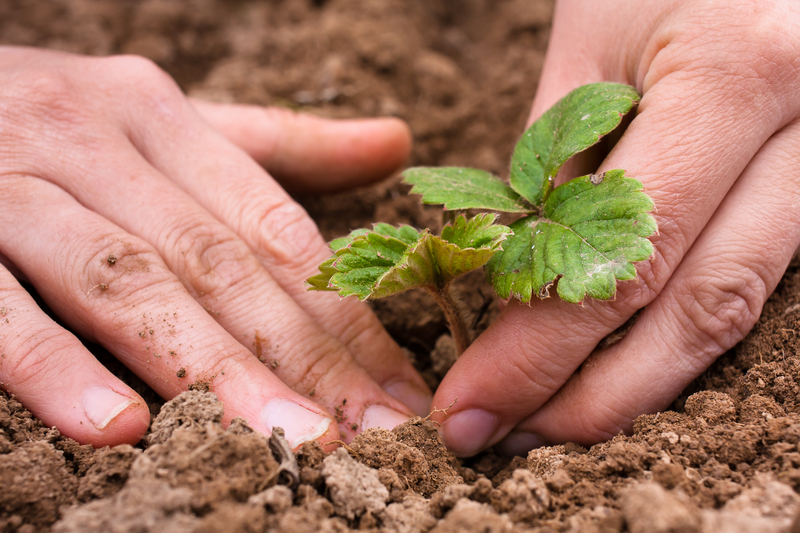Bountiful Backyards: Gardening as a Climate Solution
Posted on 23/09/2025
Bountiful Backyards: Gardening as a Climate Solution
In the race against climate change, we too often overlook the solutions hiding right outside our doors. Imagine your backyard not just as a patch of green, but as a potent force for environmental health. In this comprehensive guide, we explore how cultivating a garden at home is more than just a pastime--it's an integral climate solution. From reducing carbon footprints to supporting biodiversity, your backyard holds untapped power to help secure a more resilient future. Let's dig in!
Why Gardening Matters in the Fight Against Climate Change
The impacts of a changing climate are felt around the globe--from wildfires to floods and dwindling biodiversity. While international agreements and technological innovations are critical, grassroots solutions are equally vital. One of the most accessible is, quite literally, rooted in your backyard.
- Gardening reduces greenhouse gases: Plants draw down carbon dioxide through photosynthesis, helping to mitigate the greenhouse effect.
- Local food production cuts emissions: Growing your food reduces the need for transport, packaging, and refrigeration associated with store-bought produce.
- Biodiversity thrives in native gardens: Indigenous plants provide vital habitats and food for pollinators and wildlife, supporting ecological balance.
- Soil health improves carbon sequestration: Healthy soil stores more carbon, further reducing atmospheric CO2.
When you step into your backyard garden, you're entering a living solution to climate challenges.

How Your Backyard Can Be a Climate Solution
1. Carbon Sequestration: Harnessing the Power of Plants
At the heart of gardening's role in climate solutions is carbon sequestration. Every plant--from towering trees to tiny herbs--removes carbon dioxide from the atmosphere and stores it as biomass.
- Trees and Shrubs: Planting long-lived perennials, like fruit trees or native shrubs, maximizes carbon capture.
- Deep-rooted Plants: Roots stabilize soil, reduce erosion, and store carbon underground.
- Healthy Lawns and Groundcovers: Even a low-mow lawn or groundcover plants contribute to carbon storage if maintained organically.
By diversifying the types of vegetation in your garden, you actively participate in building a climate-resilient landscape.
2. Reducing Food Miles: Sourcing Dinner from Your Own Soil
One often overlooked aspect of climate-friendly gardening is growing edible plants. Supermarket produce can travel thousands of miles from farm to table, generating emissions at every stage. Your backyard harvest, by contrast, is as local as it gets.
- Fresh vegetables and fruits reduce reliance on trucking and refrigeration.
- Herb and salad gardens shrink your packaging waste.
- Composting kitchen scraps turns waste into rich soil, closing the loop.
Smaller-scale, organic food production in bountiful backyards not only slashes your carbon footprint but yields fresher, tastier, and more nutritious meals.
3. Boosting Biodiversity and Ecosystem Health
Monoculture lawns and chemically-treated gardens generally support few pollinators or wildlife species. In contrast, a climate-smart garden embraces a variety of native plants, trees, and flowers.
- Attract bees, butterflies, and birds by growing plants suited to your region.
- Create habitats with logs, stones, and water features to support amphibians and beneficial insects.
- Reduce or eliminate pesticides to safeguard the natural web of life.
With a thoughtful approach, your backyard can become a refuge for threatened species--and a crucial piece of the climate puzzle.
4. Soil Stewardship and Water Conservation
Healthy soil is a cornerstone of climate solutions gardening. It acts as a giant sponge, storing both water and carbon.
- Mulch garden beds to conserve moisture and build organic matter.
- Practice no-till or low-till gardening to preserve soil structure and microbial life.
- Install rainwater harvesting systems to reduce freshwater use and prevent runoff pollution.
By nurturing your soil, you enhance its ability to combat drought, absorb carbon, and support healthy crops year-round.
Sustainable Gardening Practices for a Bountiful, Earth-Friendly Backyard
Ready to transform your backyard into a thriving climate action hub? Here's how to get started, step by step.
Choose Native Plants
- Research species indigenous to your area--they're adapted to your local climate and soils.
- Native plants require fewer chemical fertilizers and less water.
- They provide critical food sources for native pollinators.
Compost Kitchen and Garden Waste
- Divert food scraps and yard debris from landfills, where they would release methane.
- Create rich, organic compost to feed your soil--which in turn, stores more carbon.
Reduce or Eliminate Lawn Areas
- Replace traditional turf with wildflower meadows, groundcovers, or food gardens.
- Less lawn means less mowing, fewer emissions, and more wildlife habitat.
Minimize Chemical Inputs
- Opt for organic fertilizers and integrated pest management techniques.
- Avoid synthetic herbicides and pesticides to protect beneficial soil life and pollinators.
Promote Water Efficiency
- Install drip irrigation or soaker hoses for targeted watering.
- Gather rainwater in barrels for use during dry spells.
- Group plants with similar water needs together for efficiency.
Encourage Community Involvement
- Partner with neighbors or local organizations to exchange seeds, plants, and knowledge.
- Start a community compost hub or plant swap.
Case Studies: Climate Solutions in Action
The Edible Suburb
In countless neighborhoods across the world, residents are converting lawns into edible landscapes. For instance, Winnipeg, Canada boasts the Edible Suburb project, where a full city block of backyards is collaboratively growing food for the local community, reducing food insecurity and lowering emissions.
Pollinator Pathways in Seattle
Seattle, Washington has pioneered "Pollinator Pathways"--neighboring gardens linked with native flowering plants to create a corridor for bees and butterflies, counteracting pollinator decline and building ecological resilience.
Permaculture in Australian Backyards
Home gardeners in Melbourne have adopted permaculture principles, capturing rainwater, composting, and planting dense edible gardens that support both their households and native wildlife while drawing down atmospheric carbon.
Addressing Common Gardening Challenges
Limited Space?
Don't be deterred if your backyard is a postage stamp--container gardening, vertical gardens, and balcony planters are excellent ways anyone can join in the climate solution movement. Even a single potted tomato plant makes a tangible difference!
Dealing With Pests Organically
- Interplant strong-smelling herbs like basil or garlic to repel pests.
- Release beneficial insects, such as ladybugs, to naturally control aphids and mites.
- Regularly inspect leaves and garden beds to catch problems early.
Drought-Proofing Your Garden
- Choose drought-tolerant native species.
- Apply a thick mulch layer to conserve water.
- Water early in the morning to reduce evaporation.
Gardening's Ripple Effect: Inspiring Broader Climate Solutions
Transforming your backyard is just the beginning. When people witness lush, productive gardens bursting from former lawns or bare soil, it awakens curiosity and inspires others.
- Schools integrate climate-smart gardens into curriculum, nurturing the next generation of eco-stewards.
- City planners incentivize green roofs, urban orchards, and public gardens to amplify climate benefits.
- Neighborhoods launch "Green Your Block" challenges, multiplying local impact.
Bountiful backyards are contagious--they ripple outwards, building momentum for wider, systemic environmental change.
Beyond Carbon: The Many Benefits of Climate Solutions Gardening
- Fresher, More Nutritious Food: Homegrown produce tastes superior and retains more nutrients than store-bought counterparts.
- Physical and Mental Health: Gardening reduces stress, boosts mood, and encourages physical activity.
- Increased Property Value: Thoughtfully designed landscapes often increase curb appeal and property worth.
- Stronger Community Ties: Sharing surplus harvests and gardening knowledge fosters neighborly connections.

Getting Started: Your First Steps Toward a Bountiful, Climate-Resilient Backyard
- Assess Your Site: Note sun exposure, soil type, and drainage patterns.
- Start Small: Choose one area to plant with climate-friendly species--success breeds confidence!
- Build Healthy Soil: Begin composting, mulch deeply, and avoid chemical treatments.
- Connect Locally: Join gardening clubs, swap seeds, and tap into your community's collective wisdom.
- Observe and Adapt: Watch how your garden responds to changes in weather and season. Adjust accordingly for the healthiest, most resilient results.
Conclusion: From Backyards to Global Action
Your own bountiful backyard may seem small in the grand scheme. But multiplied by millions of gardeners worldwide, these humble patches of green become a formidable tool in climate action.
By embracing climate solutions gardening, you not only nourish yourself and your family but also cultivate hope, resilience, and sustainability for the broader planet. So, grab your shovel--every seed you plant is a vote for a cooler, greener world.
Ready to transform your garden into a climate hero? Begin today, and watch your bountiful backyard become part of the global solution!

